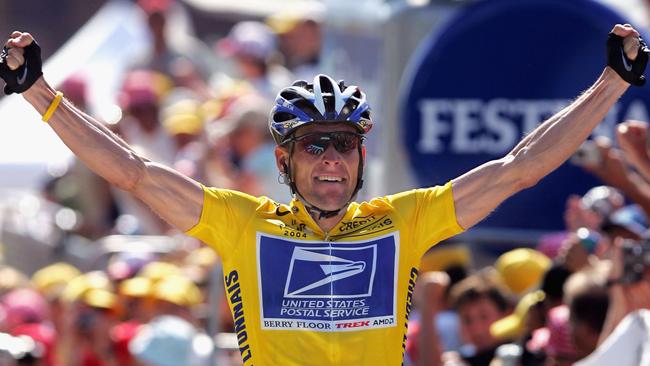Revealed at last: The huge sum of taxpayers’ money spent to lure now-disgraced cyclist Lance Armstrong to Adelaide
After a decade of secrecy, the astonishing sum of money Mike Rann’s government paid Tour de France drug cheat Lance Armstrong to come to Adelaide is revealed by the Sunday Mail.
SA News
Don't miss out on the headlines from SA News. Followed categories will be added to My News.
- No regrets: Lance Armstrong on the TDU that led to his downfall
- Despite his disgrace, Lance Armstrong remains uber-wealthy
- Evolution of the TDU: From uncertain start to iconic sporting event
- Mike Turtur’s memories: 21 incredible moments from 21 Tours
Disgraced drug cheat cyclist Lance Armstrong was paid $1.5 million to ride at the Tour Down Under in 2009.
A 10-year confidentially agreement between Armstrong and the State Government expires today, allowing the Sunday Mail to finally reveal one of South Australia’s biggest secrets.
READ BELOW: Analysis - Success, but at what price?
Armstrong was brought to SA by former premier Mike Rann — but successive Labor administrations refused to reveal how much he was paid even after he was exposed as one of sport’s biggest drug cheats.
Now, a decade later, Liberal Treasurer Rob Lucas is finally able to make public the deal between the state and the former seven-time Tour de France winner.
Armstrong was paid $US1 million to ride in the TDU in 2009, which converted to about $1.5 million in Australian dollars.
The figures for 2010 and 2011, when Armstrong also competed in the TDU, will not be revealed until the confidentiality clauses attached to those contracts expire in 12 and 24 months respectively.
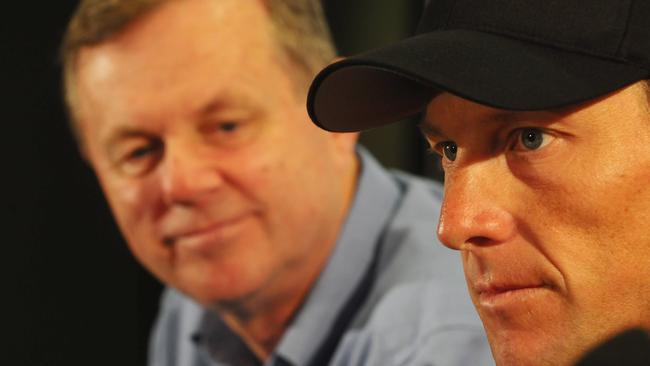
As part of the deal, Armstrong was also entitled to two first-class return airfares, hotel accommodation and reimbursement for any other reasonable travel, food and other incidental expenses.
The first-class return airfares to Adelaide from Armstrong’s home in Austin, Texas, could have added a further $40,000 to the taxpayers’ bill, even though the cyclist reportedly used a private jet to travel to Adelaide.
“South Australians have a right to know this information. We tried to release it straight after the election but couldn’t legally under the terms of the contract, which explicitly prevented either party from publicly disclosing its details for 10 years,’’ Mr Lucas said.
“By anyone’s standards that’s an astonishing amount of money to pay one man for a six-day race, not to mention the extra sweeteners on the side — first-class airfares for two, hotel accommodation, meals and other incidentals.’’
Mr Lucas also said it was surprising that no behavioural or drug cheat clause was inserted in the 2009 contract that would allow for its termination if Armstrong brought the event into disrepute.
The lack of such a clause meant Armstrong did not have to repay the millions of dollars he was paid by the South Australian taxpayer.
Mr Lucas also said the eight-page contract, which outlined items such as the number of press conferences Armstrong had to conduct and his attendance at the Legends dinner, placed no obligation on the cyclist to race in the TDU beyond taking part in the demonstration Down Under Classic event.
“I just find it extraordinary the former government would be paying $1.5 million and not requiring he actually ride in the race,’’ he said.
In 2013, Armstrong confessed he was the ringleader of one of the most sophisticated drug programs in sport and had doped to win all seven of his Tour de France titles.
He had retired after winning the 2005 Tour de France title but, in 2008, at 37 years old, he announced he was making a comeback and the TDU would be his return to road racing.
The news generated enormous excitement not only in South Australia but globally. It was predicted that hundreds of millions of viewers across the United States and Europe would tune in to watch the Tour Down Under and monitor the return of Armstrong.
Mr Rann, who would strike up a friendship with Armstrong, said the 2009 event would be “the greatest sporting event in the state’s history’’.
Armstrong certainly attracted the crowds, which rose sharply, and the economic impact of the TDU in 2009 was estimated to be about $39 million, up from $17 million the year before.
Last year, Tour Down Under race director Mike Turtur said revelations that Armstrong was among sport’s biggest villains did not detract from how his presence helped the TDU grow.
“His presence, the returned benefits to the race and to this state and to awareness around cancer … money cannot buy,’’ Turtur said.
“The smallest increase that we saw was 100 per cent, it was staggering, and we are still benefiting from that legacy.”
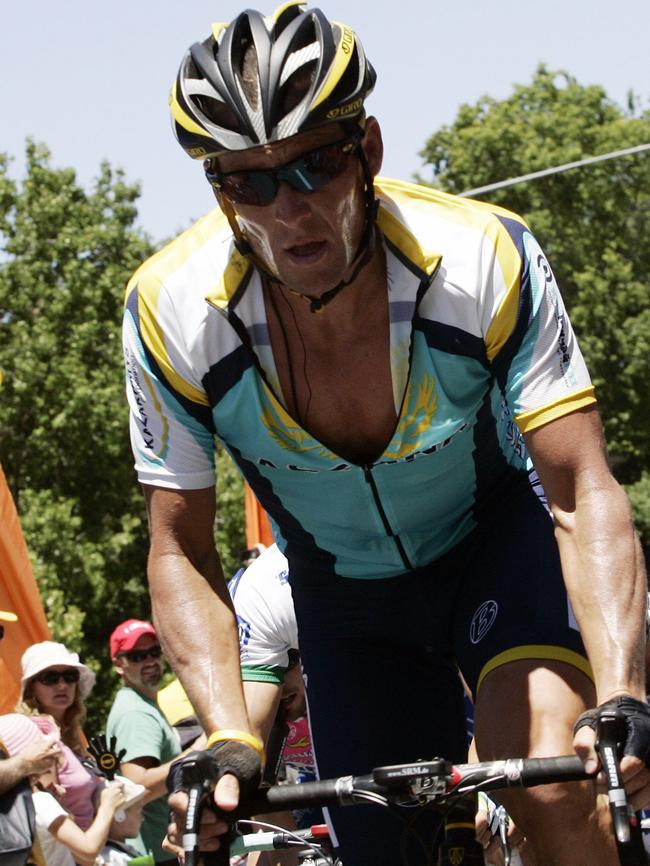
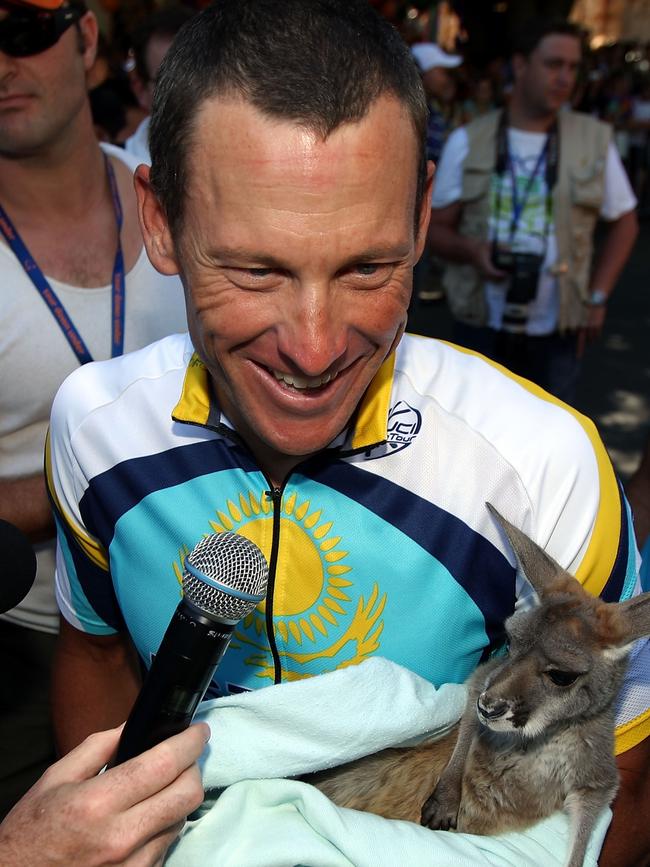
Armstrong’s impact by the numbers
2008
Lance Armstrong: Did not compete
Crowd: 548,000
Economic impact: $17.3 million
2009
Lance Armstrong: Finished 29th
Crowd: More than 760,000
Economic impact: $39 million
2010
Lance Armstrong: Finished 24th
Crowd: 770,500
Economic impact: $41.5 million
2011
Lance Armstrong: Finished 67th
Crowd: 782,000
Economic impact: $43.3 million
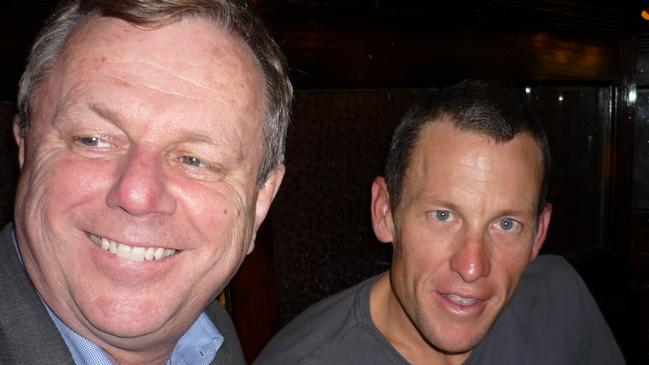
Analysis: Success, but at what price?
By Michael McGuire
It’s remarkable that it has taken so long for South Australians to discover how much they paid to bring disgraced cyclist Lance Armstrong to Adelaide for the Tour Down Under.
It’s even more remarkable that it’s been more than five years since Armstrong outed himself as perhaps the most flagrant cheater in the history of sport and still the facts were hidden.
Perhaps more bizarrely, Armstrong still has his defenders. Those who believe the ends justify the means.
That the $1.5 million we spent bringing Armstrong to Adelaide was worth it because it elevated the profile of the Tour Down Under and brought more visitors and attention to the state.
It was only last year that Tour Down Under race director Mike Turtur was still making that claim. “The smallest increase that we saw was 100 per cent, it was staggering, and we are still benefiting from that legacy,’’ he said.
Fellow Armstrong fanboy, former tourism minister Leon Bignell, was equally effusive.
And it’s true more people came, more dollars flowed, but is that the only marker for success? What does it say about you if the success of your event is built on the back of such a low-rent individual?
Perhaps the biggest mistake made was not to include some sort of “morals’’ clause into the Armstrong contract.
Such clauses are common in sporting contracts and whoever drew up Armstrong’s should have realised that.
Technically, Armstrong wasn’t a drug cheat when he raced here. Well, he was, he just hadn’t been caught.
Anyone paying attention would have known there was a strong smell of suspicion that had followed Armstrong for years and should have taken steps to protect the state.
As for the claim Armstrong competed clean in Adelaide? Surely no one seriously believes that.
In 12 months, Treasurer Rob Lucas will release the 2010 contract, once its confidentiality provisions lapse, then a year after that the 2011 version will be made public. By then it’s likely we will learn that Armstrong took more than $5 million from South Australia.
